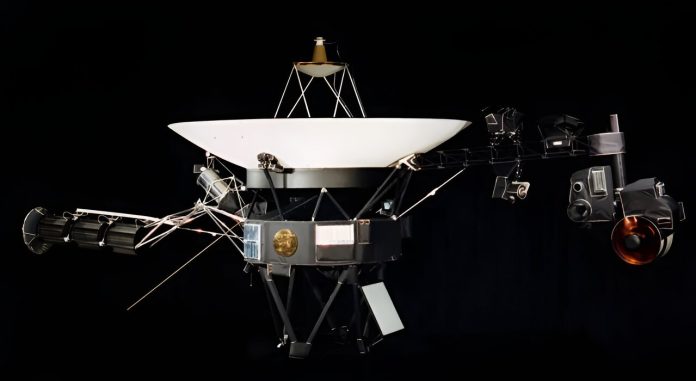
NASA engineers have successfully solved a tricky issue with Voyager 1’s thrusters, which are crucial to keeping the spacecraft pointed at Earth.
After 47 years of space travel, Voyager 1’s thrusters, which help it send and receive data, were not working as efficiently because a fuel tube became clogged.
The team had to switch to a different set of thrusters to fix the problem.
Voyager 1’s thrusters use liquid hydrazine fuel, which turns into gas and gently tilts the spacecraft’s antenna towards Earth. The spacecraft needs about 40 small bursts of gas each day to stay pointed correctly. But due to the clogged fuel tube, the thrusters couldn’t work properly.
Voyager 1 has three sets of thrusters: two sets for attitude control (which point the spacecraft) and one set for correcting its trajectory.
Over the years, the team has switched between these sets as needed. In 2002, they noticed clogging in one set and switched to another.
Then, in 2018, when the second set also showed signs of clogging, they switched to the trajectory correction thrusters.
Now, these trajectory correction thrusters are even more clogged than the first two sets. The opening of the fuel tube, which was originally 0.01 inches (0.25 millimeters), is now down to just 0.0015 inches (0.035 millimeters), about half the width of a human hair. This meant it was time to switch back to one of the older thruster sets.
The thruster switch was not an easy task. While switching thrusters would have been straightforward years ago, Voyager 1 is now much older, and the spacecraft faces new challenges.
For instance, the spacecraft’s power supply is running low, and the mission has turned off non-essential systems to conserve electricity. This has caused the spacecraft to get colder because heaters were turned off.
The cold thrusters needed to be warmed up before they could be safely used again.
The engineering team faced a puzzle: how to turn on the thruster heaters without using too much power. They couldn’t shut down any science instruments because there was a risk they wouldn’t turn back on. After careful planning, the team decided to turn off one of the spacecraft’s main heaters for an hour. This freed up enough power to warm the thrusters.
On August 27, the team confirmed that the switch was successful, and the new thruster branch is now pointing Voyager 1 toward Earth again.
Suzanne Dodd, Voyager’s project manager, explained that future decisions for Voyager 1 will need even more careful planning due to the spacecraft’s age and low power supply.
The spacecraft is currently exploring interstellar space, far beyond the bubble created by the Sun’s magnetic field.
The mission team is working hard to keep Voyager 1 running for as long as possible to continue learning about this distant region of space.



